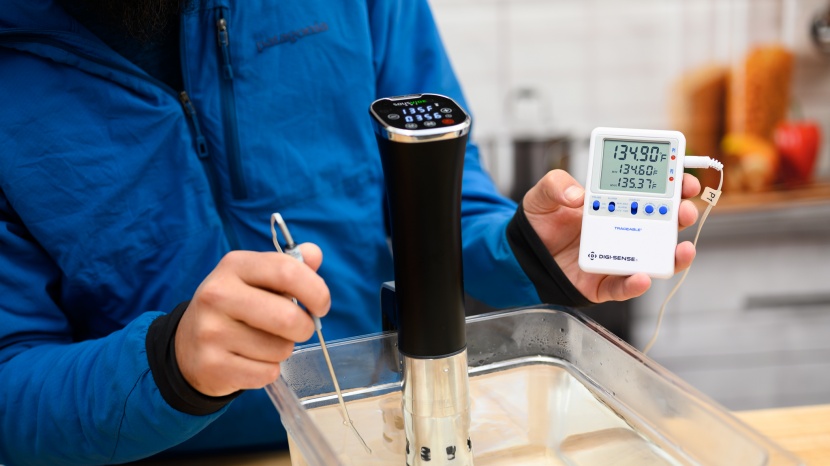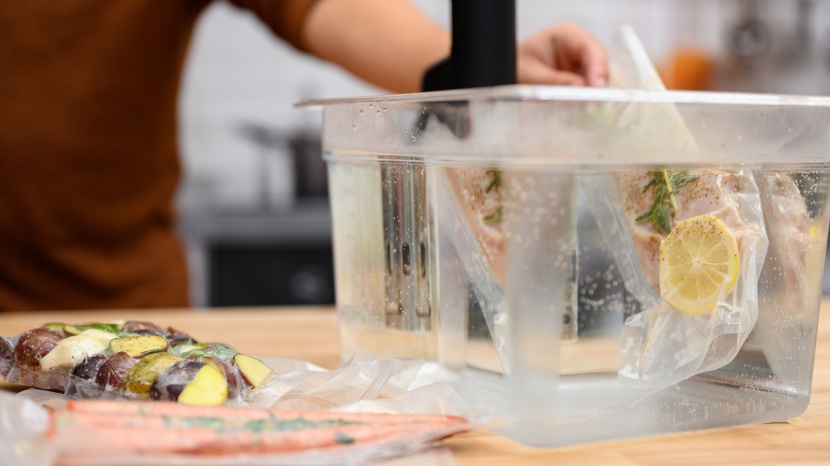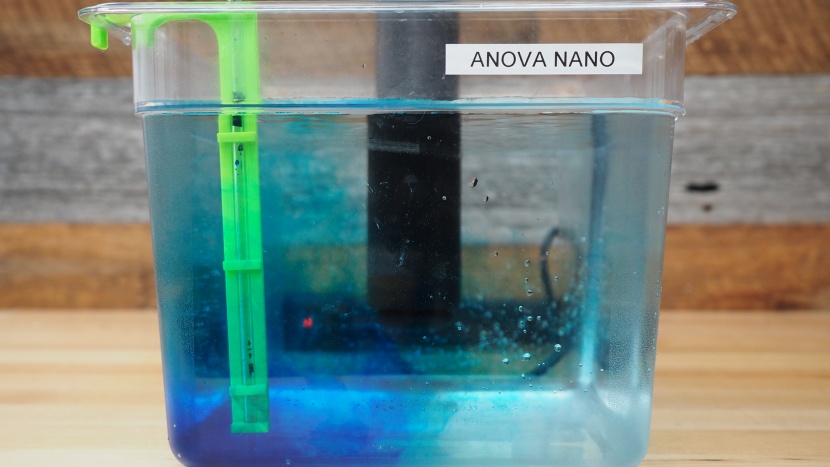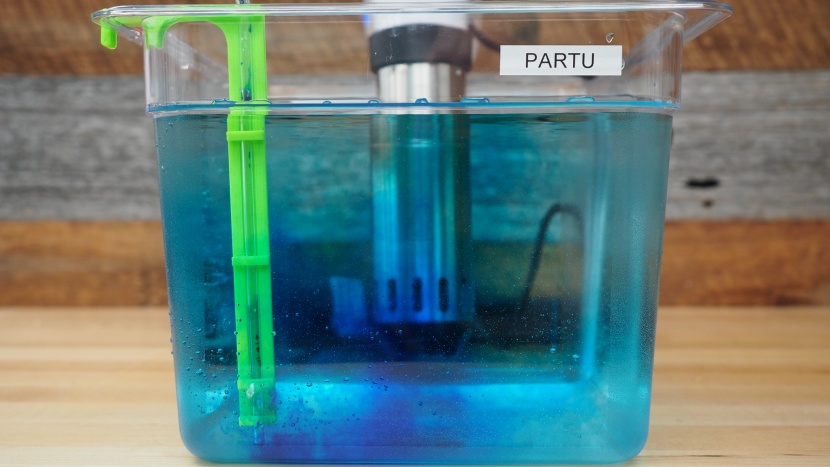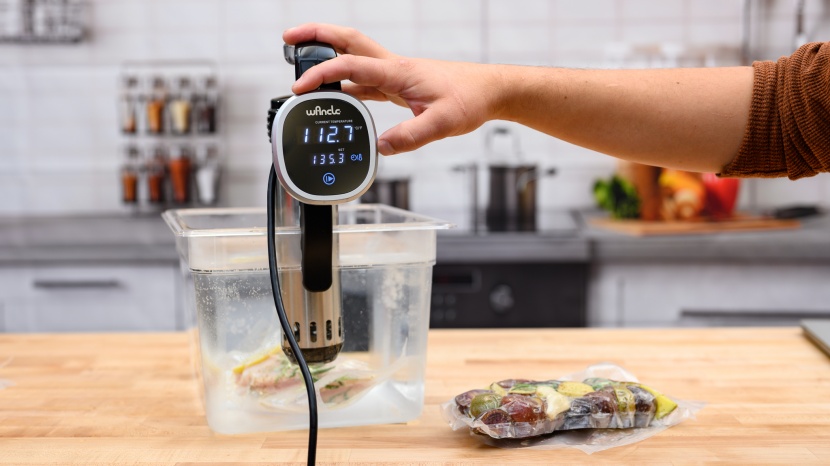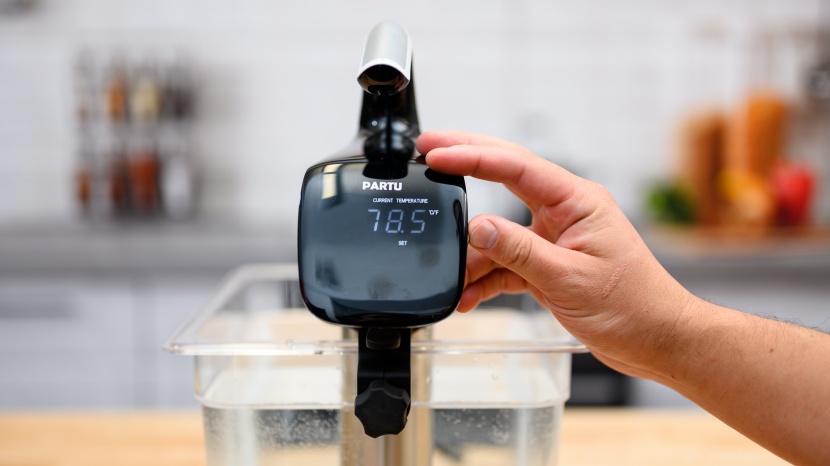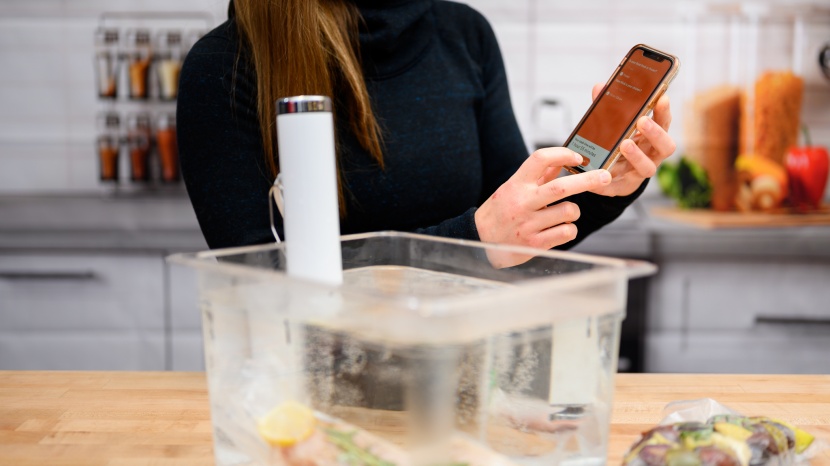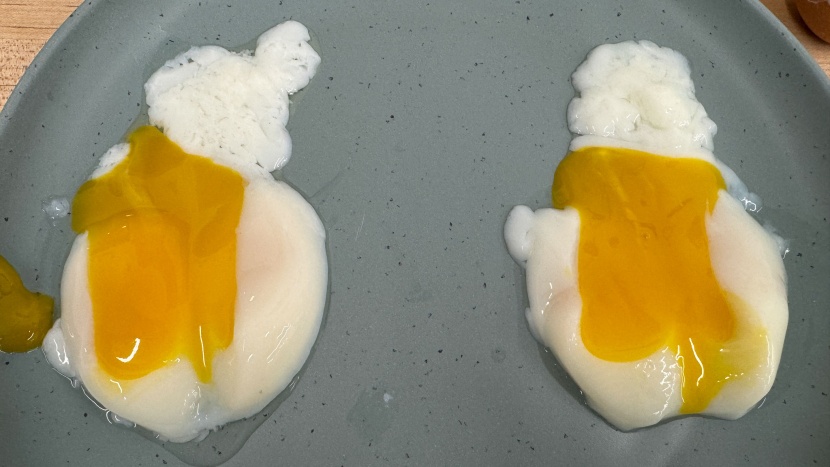We spent hundreds of hours testing and comparing the performance of sous vide machines, ranging from side-by-side tests in controlled conditions to simply sous vide-ing everything we could think of. We bought all the best products to test head-to-head for this review and cooked dozens of eggs, steaks, and all sorts of veggies along the way. Eventually, we split our testing process into three weighted rating metrics with a handful of tests in each to pick our winners.
Temperature
The main goal of each of these kitchen appliances is heating water to a precise temperature, so we naturally spent considerable time and effort comparing and evaluating the heating performance of each product. We split this metric into four parts: time to heat, recovery time, stability, and accuracy.
To compare the time to heat, we started each sous vide in a container with the same amount of cold tap water (48°F) and timed how long it took until the machine indicated it reached 147°F. Next, we looked at the amount of time it took for each machine to recover when you added cold items. In our test, we gave each sous vide time to reach 135°F, then added three vacuum sealed frozen hamburger patties and started the clock. Points were awarded based on the time it took each machine to heat back up to 135°F from the moment the hamburgers hit the water.
It's also important for each sous vide machine to maintain the same temperature for long periods of time, so our next test focused on temperature stability. To do this, we vacuum sealed temperature loggers with food for a few hours, then charted the data from each logger. The best models showed a gradual rise in temperature to the set temperature and then a straight line without any fluctuations, compared to one that showed large oscillations.
Finally, we looked at the accuracy of each product, since sous vide cooking can put you fairly close to the line between food being safe to consume and food that will make you sick. We used a calibrated lab-grade thermometer to measure the water temperature in six locations throughout the same sous vide vessel for each product, then averaged the temperature. Performance was scored by comparing each machine's set temperature and our measured average, awarding the best scores to products that exhibited the smallest differences.
Circulation
To rate and compare the circulation skills of each of these sous vide machines, we used diluted food dye to visually compare the water flow created by each product. The more circulation you have, the more even the temperature of your water bath will be and will help prevent any dead spots of cooler water when you add larger food items. We used 9.5-quart rectangular containers filled with cold water (48°F) to exacerbate any differences in circulating abilities, as it is easier to achieve maximum circulation in a stockpot or other cylindrical pot and warmer water aides in the dissipation of the dye.
We used a syringe to inject a small amount of dye in the bottom of the container, then timed how long it took for each sous vide to achieve a uniform color throughout and disperse all of the dye.
Ease of Use
In addition to evaluating the temperature accuracy and circulating abilities of each product, we spent some time ranking and scoring how convenient and easy to use each of these products are. We had a pretty good idea of this after all the time we spent testing and cooking with these products but focused on a handful of particular aspects when awarding points.
First and foremost in this metric, we looked at the interface of each machine. We want a sous vide machine to be user-friendly and intuitive to use — not something that requires you to get out the instruction manual every time you want to cook something. We looked for buttons or interfaces that are easy to interact with and responsive to commands. We also looked at how easy each machine is to control if your hands are wet.
On top of that, some of these machines also have companion apps — or can only be controlled through the apps — so we also took the ease of use of the app into account when determining scores, including the reliability of the connection between phone and sous vide.
Then, we evaluated the display of each machine and how it attaches to the container. We awarded the most points to products that had clear and easy to read displays and attachment methods that were versatile and easy to use with different vessels.
Cooking
To test these sous vides in a real-world scenario, we cooked an egg with each device set to 144.5°F for one hour. This test involved the devices's temperature accuracy, temperature stability, and circulation. If all three elements worked as intended, then the quality of the cooked egg should be consistent.
We wanted to see how well each sous vide machine could cook an egg that would go great with a piece of toast. The goal was to achieve an egg with a set white that retained its shape when removed from the eggshell with a yolk that was runny when cut into, yet slightly thickened for a creamier texture.
After one hour of cooking, the eggs were placed in an ice bath to cool. Once cooled, they were cracked onto a plate and evaluated for their consistency and texture in meeting our set expectations.

